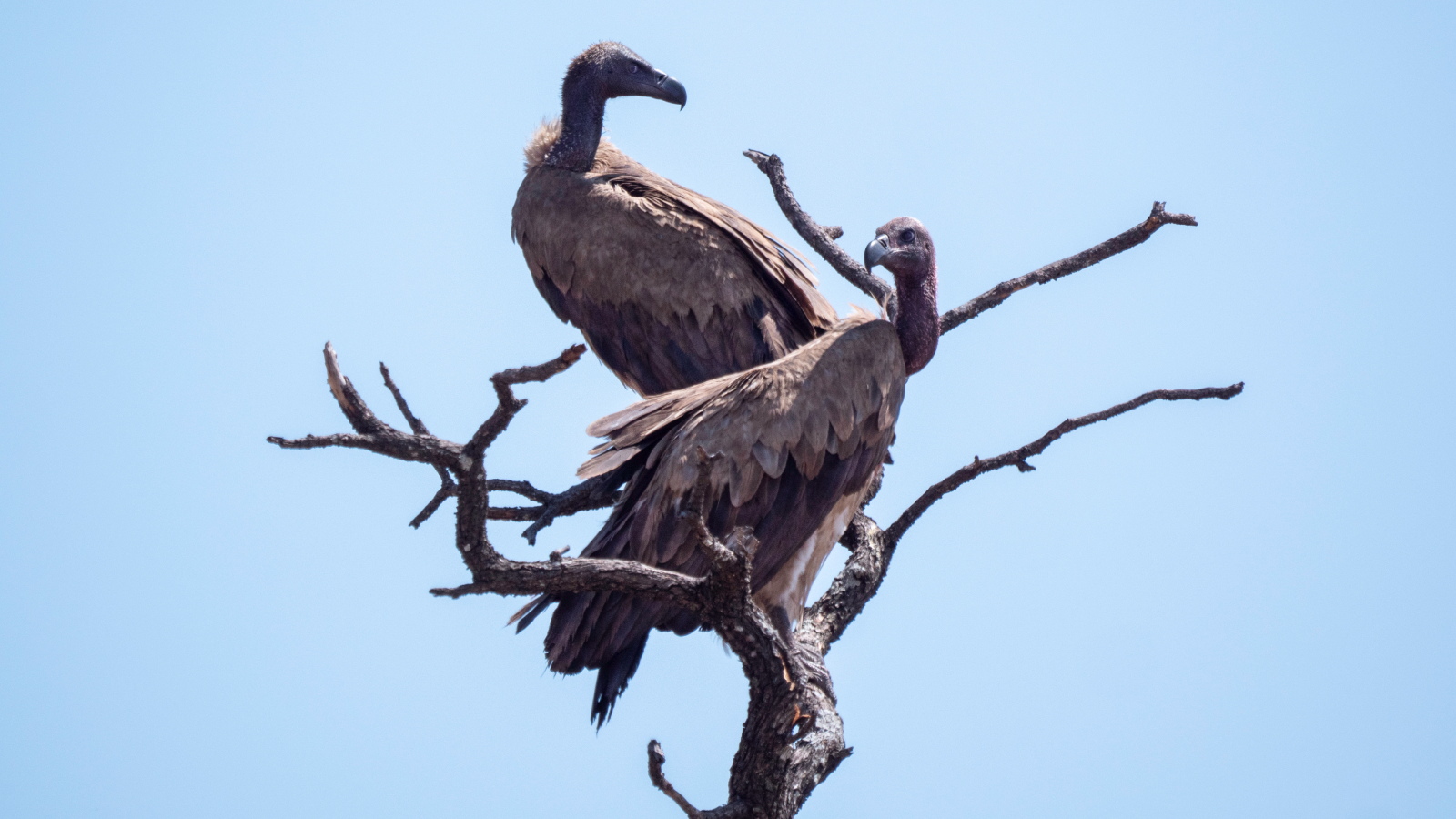In Photos: Take a Tour of Grand Teton National Park
Teton Mountain Range
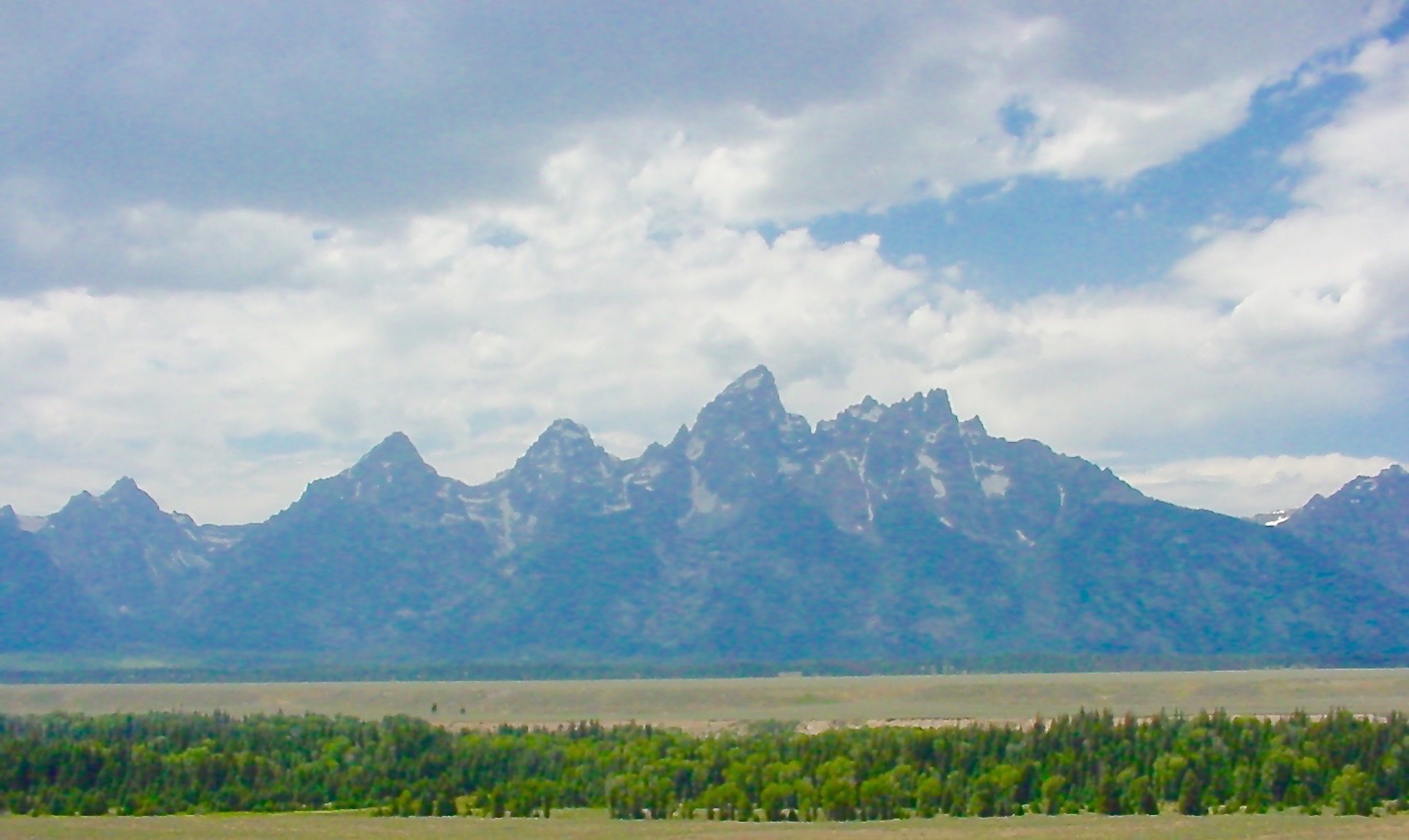
The Teton Mountain Range is one of the most dazzling, awe-inspiring natural places still found on the North American continent. The magnificent mountains are located in the state of Wyoming and encompass most of the Jackson Hole valley. The range is a part of the Greater Yellowstone Ecosystem, which is the largest nearly intact natural area in the contiguous United States. Today, many species of animals such as bison, elk, bear, eagles and moose can still be found and enjoyed in the two national parks, seven national forests and two national wildlife preserves that make up the ecosystem.
From above
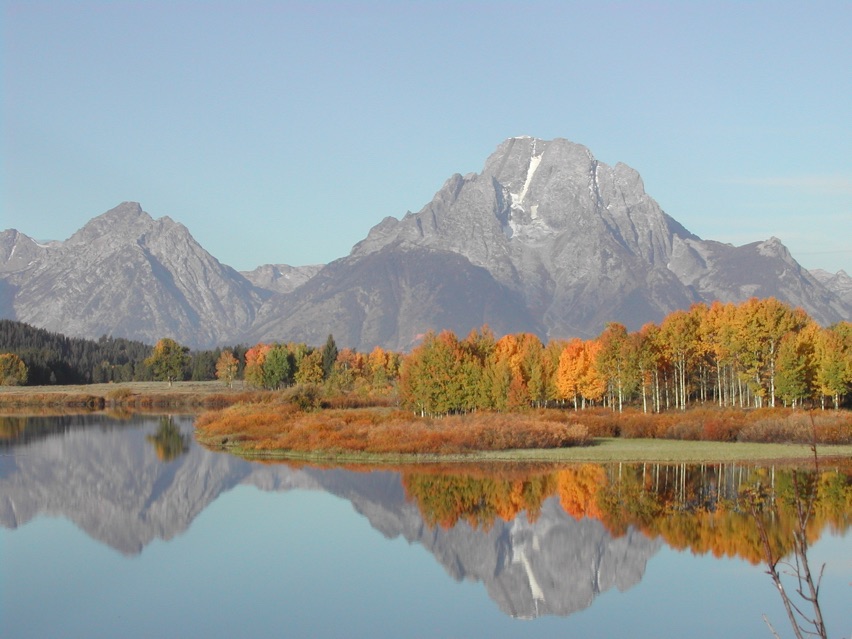
The Teton Range is a young mountain range that was uplifted only about 9 million years ago. The tallest peak, the Grand Teton, rises some 13,775 feet (4,200 meters). The origin of the naming of the Tetons is shrouded in controversy. Some historians think that French explorers named the mountain range "Les Trois Tetons" (which translates to "the three breasts") to honor the female anatomy. Other historians contend that the mountains received their name from the local Teton Sioux tribe, one of the seven indigenous groups of Lakota people found on the Great Plains of North America.
Long and tall
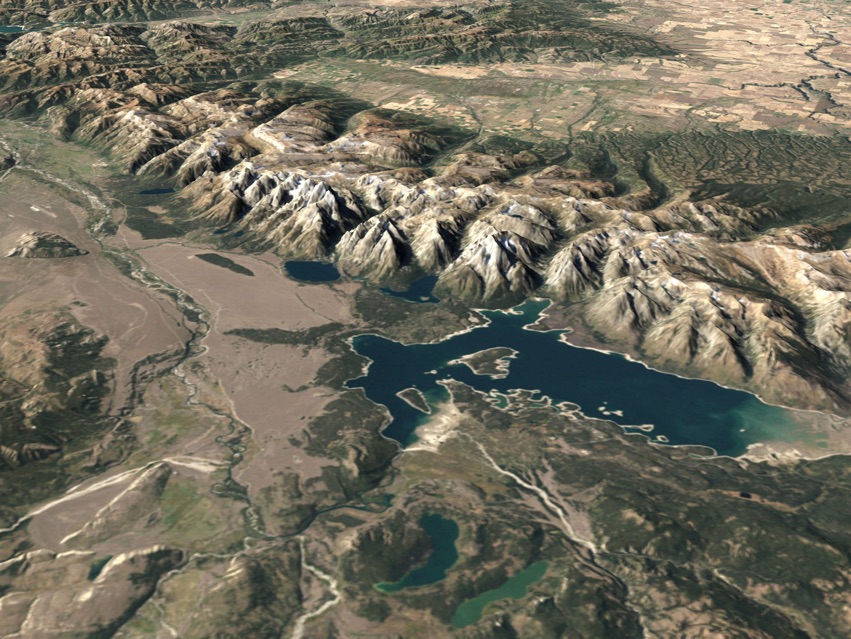
The Teton Range extends some 40 miles (64 km) in length while rising some 7,000 feet (2,130 m) above the Jackson Hole valley. The area has many lakes including the 15-mile-long (24 km) Jackson Lake, as seen here in this NASA Landsat photo. The primary downstream segment of the Snake River also meanders across the Jackson Hole valley.
From sea to mountains
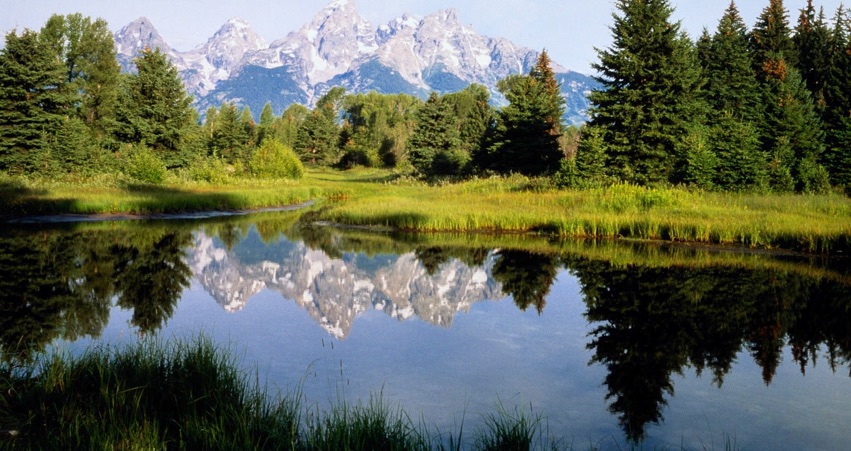
The geological history of the Teton Range began some 2.7 billion years ago along the edge of an ancient seaway known as the Cordilleran trough. The constant ebbing and flowing seafloor was being filled daily with thick layers of mud, sand and volcanic sediment that would over the years reach miles in depth. Some 60 million years ago, the Farallon Plate under the Pacific Ocean began to subduct below the North American Plate, resulting in the creation of today's Rocky Mountains. Then, 10 million years ago, massive earthquakes triggered by the shifting of the Teton fault began tilting the mountain blocks upward, resulting today in an offset along the valley floor of nearly 30,000 feet (9,140 m).
Young and old
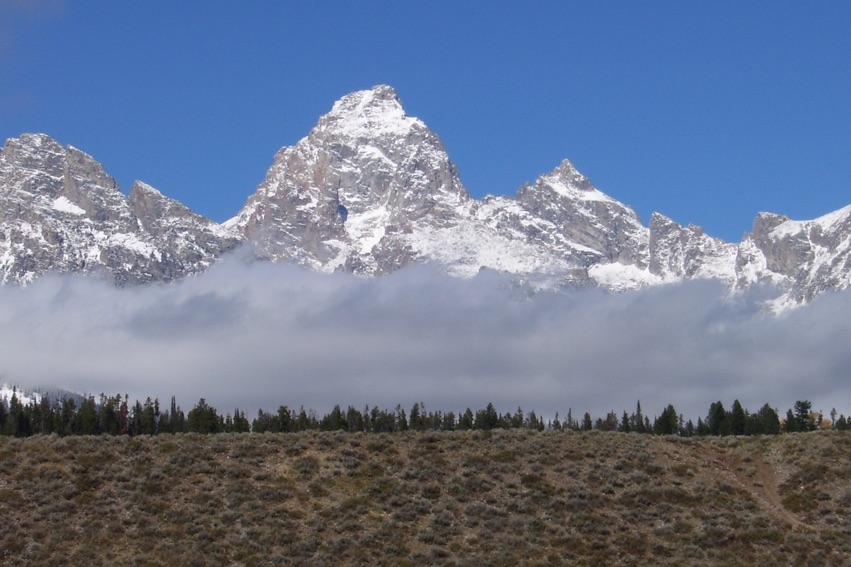
Even though the Teton Range contains some of the oldest rock found in North America, the Tetons themselves are one of the youngest (9 million years old) of North American mountain ranges. The 2.7-billion-year-old metamorphic rock, known as gneiss, make up the vast majority of the Teton Range. Before the collision of the two tectonic plates, these rocks of the Tetons were buried some 18 miles (30 km) below the Earth's surface.
Erosion over time
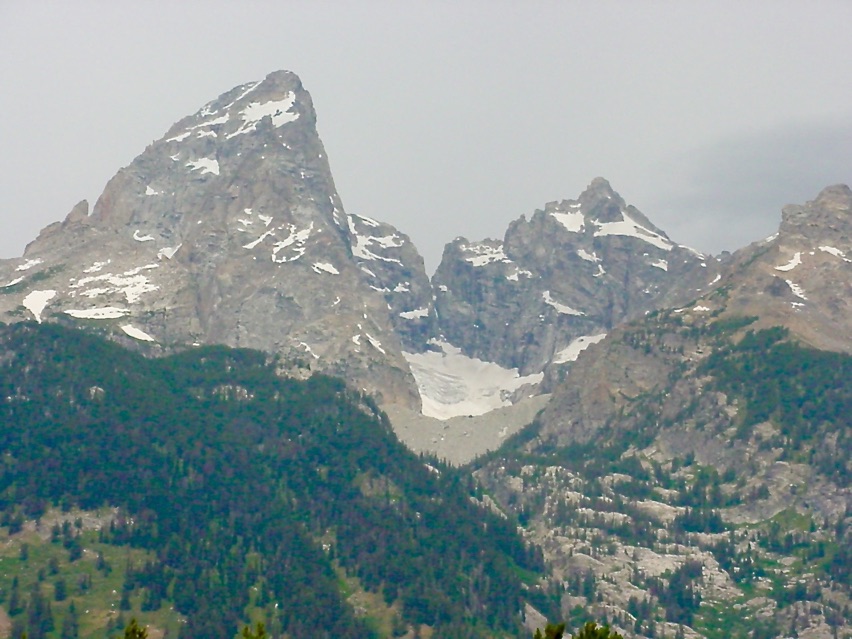
The striking appearance of the Teton Range is due to both their relatively young age and the ever-present and constant forces of erosion. Massive Pleistocene Ice Age glaciers are responsible for sculpturing the rugged high peaks with their deep U-shaped canyons. These Pleistocene glaciers disappeared some 10,000 years ago, but smaller glaciers reformed in the Teton Range during the Little Ice Age (1400 CE - 1850 CE). Today, there are 11 active glaciers within the Teton mountains, 10 of which are large enough to be named on U.S. Geological Survey maps. The Teton Glacier is shown here just to the right of the Grand Teton peak.
Slice and dice
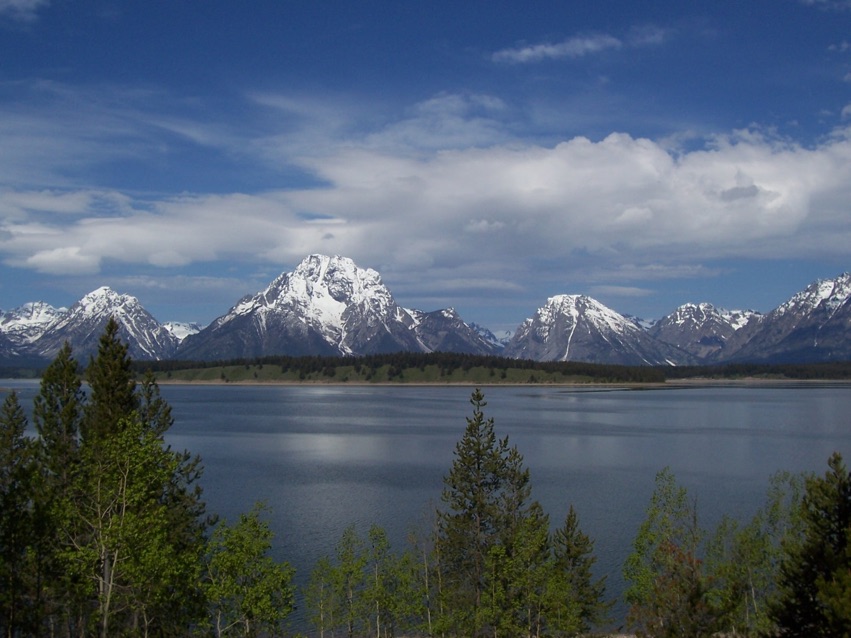
The movement of glaciers through the Teton Range resulted in the carving of many deep depressions in the valley floor. Six, jewel-like morainal lakes are now found at the base of the Teton Range. Jackson Lake, shown here, is the largest of the glacier lakes covering 40 square miles (104 square kilometers) with a maximum depth of 438 feet (134 m). More than 100 additional backcountry and alpine lakes and ponds are also found scattered throughout the Teton Range.
Get the world’s most fascinating discoveries delivered straight to your inbox.
Opportunities to wade
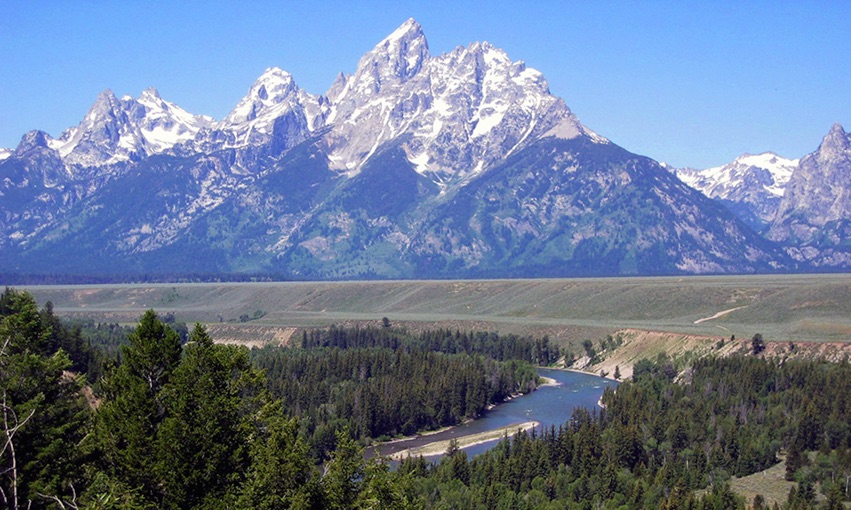
The many opportunities to enjoy water throughout the Teton Range include world-class fishing along the Snake River, which meanders along the base of the mountains. With its headwaters on the Two Ocean Plateau inside of Yellowstone National Park, the Snake River is a major river of the Pacific Northwest region of North America. The Snake River, shown here flowing near the Grand Teton, is 1,078 miles (1,735 km) long and is the largest tributary of the Columbia River.
Splendor in all directions
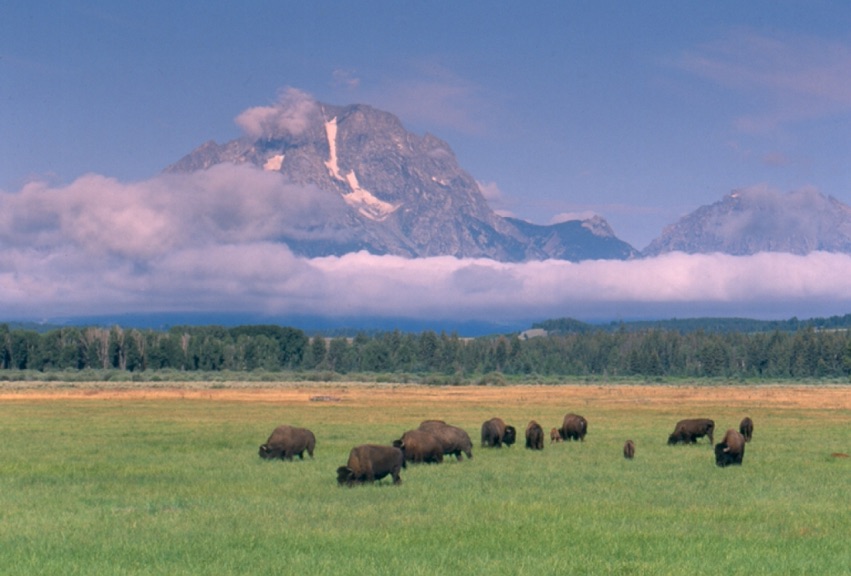
With such natural beauty everywhere, it is little wonder that the Grand Teton National Park was established in February 1929. The park encompasses some 484 square miles (1,250 square kilometers). Park elevation ranges from 6,320 feet, (1,926 m) to 13,775 feet (4,200 m). Archeological evidence suggests that early hunter-gatherer Paleo-Indians first entered this land some 11,000 years ago. The Shoshoni tribe claimed this region when French and American fur trappers entered the beautiful river valley early in the 19th century in search of beaver pelts. A herd of American bison is shown here grazing in one of the meadows in front of Mt. Moran.
Perfect for plants
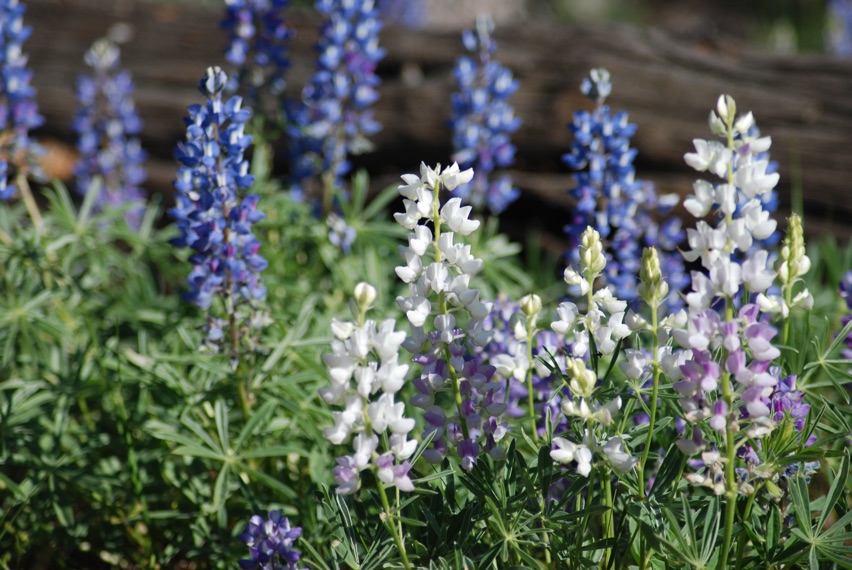
The floor of the Jackson Hole valley, as well as the many mountain valleys, are predominately composed of a loose rocky soil that is ideal for water to percolate through it. With such ideal conditions of moisture and soil, more than 1,000 species of vascular plants grow within the park's boundaries. Big leaf sagebrush, Artemisia tridentata , dominate the valley floor, intermingled with a vast diversity of wildflowers. Conifers dominate the mountain sides and canyon regions. A patch of lupine flowers, Lupinus perennis, is shown here and is one of many species of wildflowers that add seasonal beauty to the national park.
Home to many
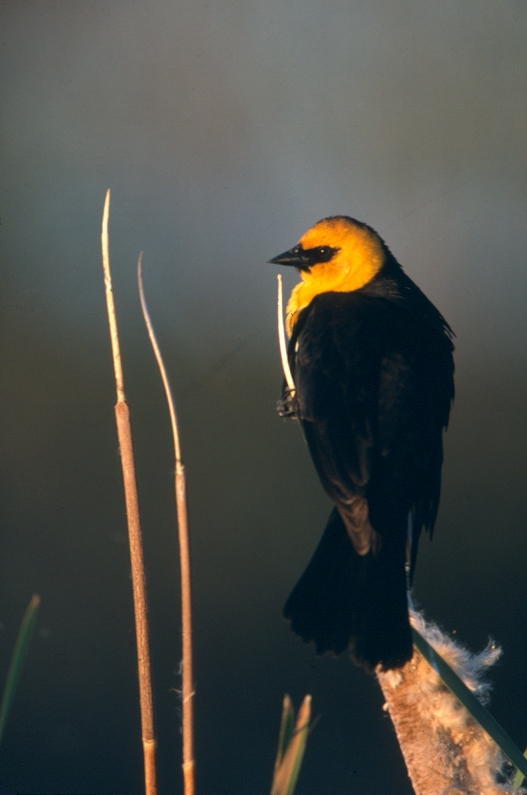
With such a lush and diverse natural environment, wildlife abounds throughout the Teton Range. Sixty-one species of mammals, including bears, moose, badgers and more, are found in the area's alpine, forest, sagebrush flat and wetland zones. The national park is renowned for its excellent trout fishing. More than 341 species of birds, including the yellow-headed blackbird (Xanthocephalus xanthocephalus) have been documented within the park's boundaries. Both golden eagles, Aquila chrysaetos, and bald eagles, Haliaeetus leucocephalus, are commonly seen soaring above the vast meadows along the Snake River in search of a delicious rabbit, carrion or trout dinner.
